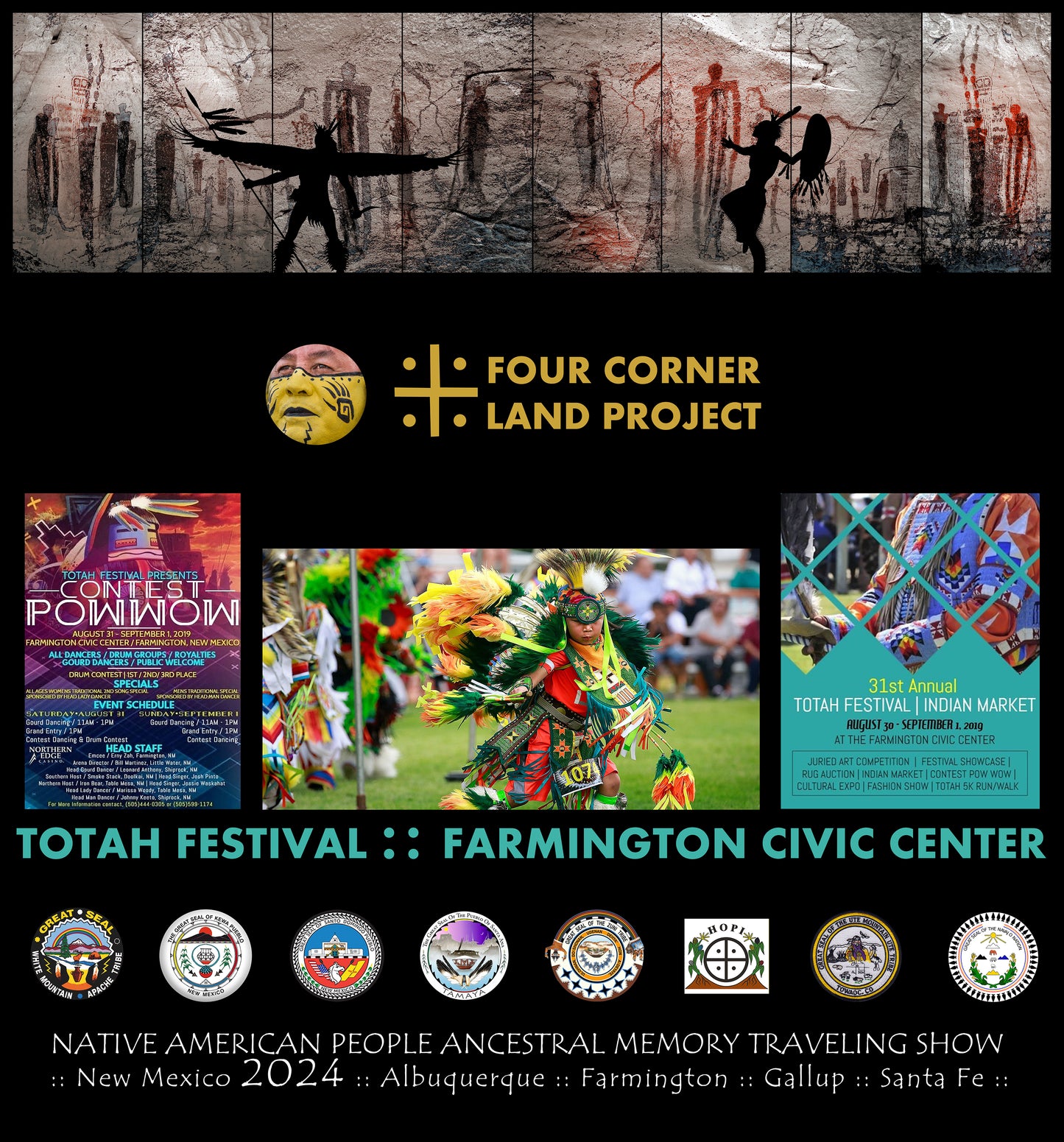sutulov online by Nakiva Kwoci, LLC
FCLP New Mexico / Four Corner :: Land Project Series
Couldn't load pickup availability
Iconographic Construction: four-color lithographic mylar
Image Size: 6 1/2 x 26 1/2 inches
Marks: edition number, title, mural code of arms, artist chop, edition chop, and artist signature.
Presentation: hardcover portfolio with archival separation sheet.
Four Corner Land Project Series is a compendium of hieroglyph iconography which are part of a world of more than 5.000 archeological sites. FCLP New Mexico is based on a Barrier Canyon-style pictographs panel in Wild Horse Canyon in the San Rafael Swell in central Utah. The rock art panel was painted on the ceiling of an alcove. This cliff people of the Archaic Culture more than 1.500 years ago are captivating in their morphology. Our interest in deciphering the origins of such particularities, like anthropomorphic figures with arms that are longer than their legs!
Edition
Edition
BAT (Bon-a-Tirer) 1
Printer's Proof 1
Artist Proof 8
Edition of 40
Shipping & Handling
Shipping & Handling
All editions are shipped in a 3/16 inch black gator board flat portfolio with acid-free separation sheets and boxed with protection foam approved by most major air and ground carriers, including UPS and FedEx®.
Certificate of Authenticity
Certificate of Authenticity
All editions come with documentation with a complete description of the print's genesis and stage work. This information is critical in authenticating the processes that require meticulous production.
The acid-free heavy stock board document, embellished with Atelier's silver foil seal, is unique, granting them work's added value. Said certificate of authenticity also includes the artist's signature, chop, and edition chop marks.
Care Instructions
Care Instructions
Improper framing can permanently damage your print; a professional framer that uses archival materials is essential.
A window mat is a matter of personal taste. Often a print with a border is hinged to a backing-this is called "floating" the print- and requires a spacer, hidden by the edges of the frame, to keep the print from touching the Glass in the same way that a window mat does. A window mat may cover the edges of the paper if you prefer (although the edges are considered to be an integral part of the print), or the print may float within the window.
Prints are never glued or taped directly to a backing with pressure-sensitive tapes; hinges made of linen or fine Japanese paper hold the print to the backing with non-acidic, non-staining, reversible adhesives.
Both glass and acrylic sheeting (plexiglass) condense moisture from the air; if your print touches either, it may actually stick to the surface and be ruined.
Both will protect your print and filter some of the harmful rays of light. Glass is less expensive, but it breaks easily. Ultraviolet filtering glass and plexiglass are available at a higher cost. Since Glass is heavier than plastic, it may be impractical for very large prints. Plexiglass, although lighter, is more expensive than ordinary Glass, scratches easily, and carries an electrostatic charge that causes it to attract dust.
Bright daylight and artificial light can cause colors to fade and papers to discolor and become brittle. Too much light is harmful even when ultraviolet rays are filtered out, so make sure your print is exposed only to moderate light for limited hours at a time. You might also consider rotating your prints from time to time.
When handling unframed prints, make sure you work with gloves or clean hands. Finger smudges, dirt, or dents and tears caused by carelessness will affect the value of your print. If you must handle your print, lift it by diagonally opposite corners to avoid creasing. Prints should be stored flat, either in or out of archival mats, layered between sheets of non-acidic interleafing tissue.
Ever store your prints against surfaces such as corrugated board or wood; not only are the materials acidic, they also have textures that can imprint themselves on your artwork.
Your storage area should be clean, dry, and protected from insects and vermin. Roaches, silverfish, and mice are common despoilers of paper. Simple, relatively inexpensive non-acidic boxes will protect your prints from environmental damage; they are available from art and preservation suppliers.







FOUR CORNER :: LAND PROJECT
Four Corner Land Project Series' long-term objective is to make Native American Ancient History public, beginning with the Four Corners peripheral capitals airports; large scale LED projections for hieroglyph readings. Between Denver International Airport, Salt Lake City's recently refurnished airport, Pheonix Sky Harbor, and Albuquerque's Sunport, more than 140 million passengers travel every year, creating a niche of a significant captive audience.
-

Albuquerque Sunport
The Albuquerque International Sunport is one of the country's most culturally unique airports because of its New Mexican architecture and extensive art collection. For us, it would be crucial to implement LED projections that can augment the everlasting ambiance of the old West and the portentous of its ancient cultures.
-

Four Corners Captive Audience
The substantial increment of air traffic in the Four Corners region brings all four airports to a whopping 140 million passengers:
Salt Lake City International Airport: 25M
Denver International Airport: 65M
Phoenix Sky Harbor: 45M
Albuquerque Sunport: 6M








